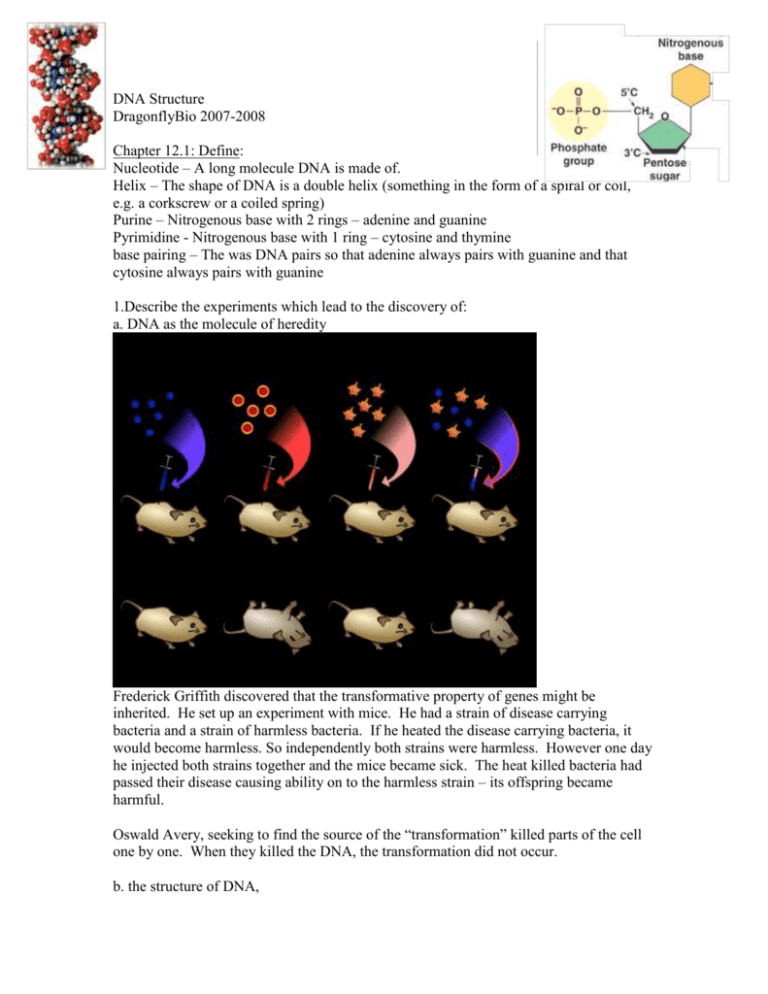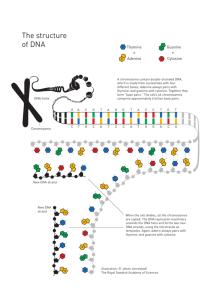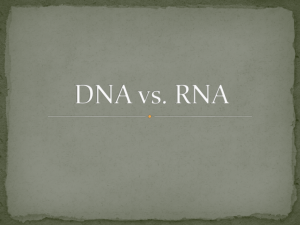DNA Structure
advertisement

DNA Structure DragonflyBio 2007-2008 Chapter 12.1: Define: Nucleotide – A long molecule DNA is made of. Helix – The shape of DNA is a double helix (something in the form of a spiral or coil, e.g. a corkscrew or a coiled spring) Purine – Nitrogenous base with 2 rings – adenine and guanine Pyrimidine - Nitrogenous base with 1 ring – cytosine and thymine base pairing – The was DNA pairs so that adenine always pairs with guanine and that cytosine always pairs with guanine 1.Describe the experiments which lead to the discovery of: a. DNA as the molecule of heredity Frederick Griffith discovered that the transformative property of genes might be inherited. He set up an experiment with mice. He had a strain of disease carrying bacteria and a strain of harmless bacteria. If he heated the disease carrying bacteria, it would become harmless. So independently both strains were harmless. However one day he injected both strains together and the mice became sick. The heat killed bacteria had passed their disease causing ability on to the harmless strain – its offspring became harmful. Oswald Avery, seeking to find the source of the “transformation” killed parts of the cell one by one. When they killed the DNA, the transformation did not occur. b. the structure of DNA, Hershey-Chase put marker into the DNA of a Bacteriophage. A Bacteriophage is a virus which injects its DNA into a cell in order for the cell to make more Bacteriophage. 2. What are the 3 functions of genes (DNA)? -Carry information from one generation to the next -Put that information to work by determining the heritable characteristics of organisms -Had to be easily copied every time a cell divides. 3. What three components make up a nucleotide? 5 carbon sugar deoxyribose A Phosphate group A Nitrogenous base o Purines (two rings) Adenine Guanine o Pyrimidines (one ring) Cytosine Thymine 4. What makes up the “backbone” of the DNA molecule? The sugar and phosphate groups of each nucleotide. 5. What specifies the genetic “code”?. The 4 different nucleotides can be strung together like letters in an alphabet. 6. What enzyme unzips genes? Helicase 7. Which bases are “complementary” (pair) with each other? A=T C=G








